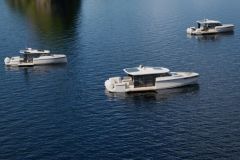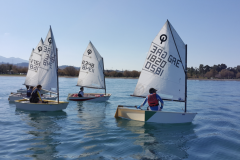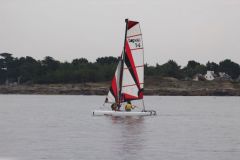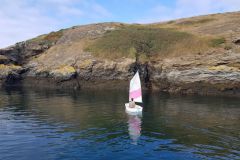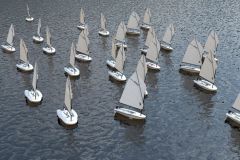Learn to sail like a child
Until now, automation in sailing has been based on precise modeling of physical phenomena and the resulting instructions for steering the boat. But the teams at Marin, one of Europe's most renowned maritime research institutes, have decided to go a step further, relying on artificial intelligence. Based on the observation that a child learning to sail on an Optimist does not master the details of hydrodynamics or aerodynamics, but discovers them from experience, they wanted to see if a computer could discover sailing in the same way.

An automated Optimist
For this purpose, an Optimist was adapted for the experiment in the research center's test basin. Actuators gave the computer control of 3 essential parameters: the tiller, the mainsheet and the ability to move a weight corresponding to the crew member across the boat. This gives the computer access to the dinghy's course, wind power and heel.
Learn before you sail
To speed up and simplify the learning process, the artificial intelligence was first trained using simulations of real-life dynamic conditions. A so-called learning reinforcement agent was used. This copies reality by "rewarding" the machine when the result of its actions is positive, and assigning penalties when it is not. Rewards and punishments are linked to a series of actions, rather than specific ones.
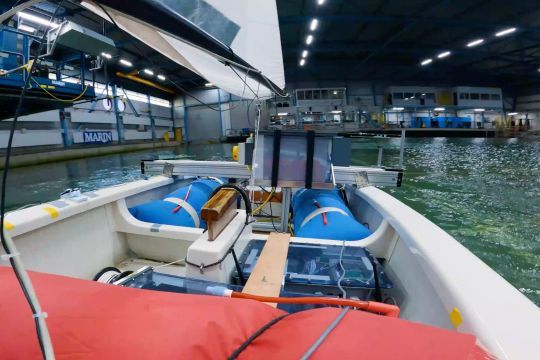
Encouraging results
During the learning process, the AI tests risky behaviors, just like a novice sailor. These are then eliminated by feedback adapted to the machine. Different AI agents were trained on the Optimist, resulting in different behaviors, similar to those observed in children discovering the Optimist.
The machine was invited to sail upwind within a given perimeter of the test basin. One did a series of tacks, ending up sculling with the rudder on the last few meters, considering the penalties associated with this acceptable, another took more risks, while proving faster, a third was more conservative, while remaining efficient, and the last too conservative to achieve the objective.
For the researchers, this experiment opens up new avenues for use in different maritime domains, with training on different types of vessel. Beyond leisure sailing, where the yachtsman will probably want to keep the pleasure of the action, professional applications are opening up, notably in fuel economy or the identification of drops in performance.

 /
/ 


